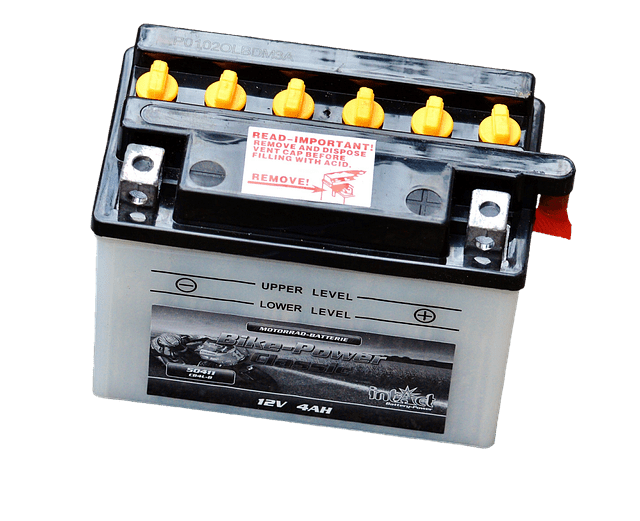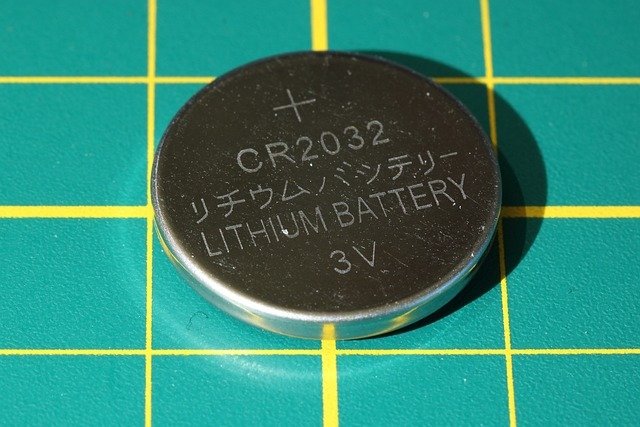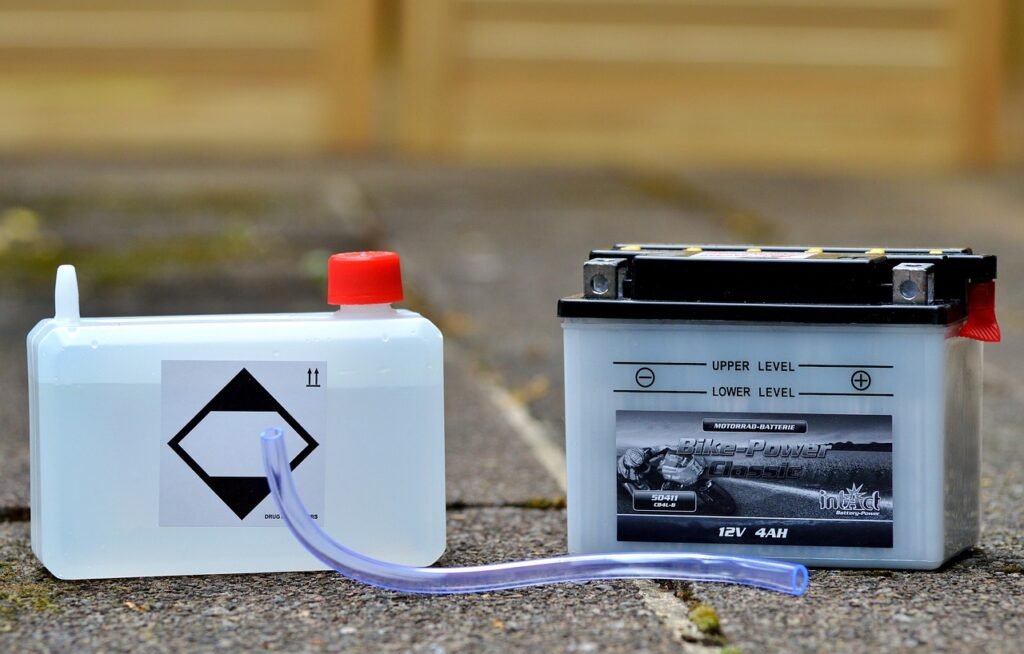Now a days, renewable energy source play vital role in energy production. In day to day, solar energy plant will increasing around the world. So batteries play major role in solar energy plant to store surplus energy generated by solar panel during whole day. Batteries play a pivotal role in various applications, with a significant impact on both conventional inverters and their eco-friendly counterparts, solar inverters. In this post, our aim is to provide detail knowledge of understanding batteries: their role in inverters and solar inverters.
Table of Contents
ToggleIntroduction
Battery is referred to by another word in the scientific and industrial world. It is called a cell. Batteries are a collection of one or more cells whose chemical reactions create a flow of electrons in a circuit. All batteries are made up of three basic components: an anode, cathode and some kind of electrolyte (a substance that chemically reacts with the anode and cathode). Battery is devise that convert the chemical energy to electrical energy.

Working of Battery
A battery has two metal ends that are called terminals. One terminal is known as the positive end and the other as the negative end. The negative end is usually flat, while the positive end looks more like a button. Most cells have a center core, or rod, which is connected to the positive terminal. Each battery consists of four main parts: a positive electrode, a negative electrode, an electrolyte, and a separator.
The positive and negative electrodes are the active materials that allow the electric current to be generated. The electrolyte is a paste-like substance, or solution, that contains charged particles which can move or conduct an electrical current. The separator is the material that provides separation and insulation of the electrical current from the consumer. This is the casing of the battery.
Types of Battery
Batteries generally classifies into two main groups: primary and secondary battery types.
Primary batteries
Primary batteries are disposable batteries that cannot be recycled. Different types of primary batteries(disposable batteries).
1.Household Batteries
Household batteries is the most familiar type of battery, which is also used in most of our consumer appliances such as radios, cameras, flashlights and the like. The alkaline battery is the most common battery in the respective group.
2.Alkaline batteries
The alkaline battery has a high flow resistance and energy density and long life when used continuously for equipment that is not a power guzzler. Alkaline batteries costs almost twice as much as manganese batteries, but lifetime of battery is much more than manganese batteries.
3.Manganese / Zinc Carbon batteries
The market for manganese batteries is becoming less and less, as it generally has a much shorter lifetime than other batteries on the market. Should we therefore use a battery continuously in equipment that requires a lot of power – or at low temperatures, it is a good idea to choose either alkaline or rechargeable batteries.
4.Button cells / Button Cell Batteries
Button cell batteries are similar but vary in size. You can use them in small electronic devices such as watches, hearing aids, games, toys, calculators, etc. The battery can be composed of two or more button cells and is available in several chemical systems like Lithium (CR / BR / LI), Zinc-Air,silver oxide, alkaline, mercury oxide.

Secondary batteries (rechargeable batteries)
Rechargeable batteries(secondary) are used more and more frequently today. Especially in the very power consuming devices where the batteries shall changes frequently – such as cordless phones, camcorders, hand tools, etc. By using rechargeable batteries, you both save money and the environment.
Rechargeable batteries (secondary) can divides into the following chemical systems:
1.Nickel-Cadmium (NiCd)
NiCd batteries are one of the oldest types of batteries available today. NiCd batteries are suitable for use at high current loads, such as hand tools require. Although they make a good performance, they are very susceptible to the “memory effect” (the formation of large crystals within the cell, which gradually impairs the effectiveness of the batteries). It is therefore important to remember periodically to charge and discharge the batteries fully in order to conserve the battery efficiency. NiCd batteries are actually one of the hardiest batteries available and it works well at low temperatures.
- Nickel Metal Hybrid (NiMH)
NiMH batteries are the most commonly used rechargeable batteries today. A NiMH battery has a high energy density and provides up to a 40% longer life than comparable NiCd types. NiMH batteries have therefore become a natural environmental alternative to replace NiCd batteries in several electronic devices. NiMH batteries contain toxic heavy metals. This type of batteries are also less susceptible to “the memory effect” than NiCd and does not require a discharge and charge nearly as often. The disadvantage of these batteries is that they self-discharge relatively quickly compared to NiCd.
- Hybrid / Pre-charged batteries
Hybrid batteries are a new technology where you have taken the best of rechargeable batteries and combined with the best of alkaline batteries. Hybrid batteries have a very low self-discharge together with Alkaline batteries. Hybrid batteries are therefore ready to use right away, as they have been charged at the factory. Even after 1 year, there will still be power in the battery. Hybrid batteries can be recharged between 500-2000 times (depending on usage), which is good for both the economy and the environment.
- Lithium-Ion (Li-Ion)
One of the latest product developments in environmentally friendly rechargeable batteries are lithium ion. The use of this type of battery rises sharply. Lithium-ion has the highest energy density of rechargeable batteries and is especially good for providing power to portable equipment where both low weight and long service life are important. For example, in wireless phones.
Li-Ion battery has a different battery voltage than other rechargeable batteries and therefore it often cannot directly replace them. Li-ion does not require as much maintenance as other battery types. It is not prone to the “memory effect” and do not need periodic charge and discharge cycles to prolong battery life. The self-discharge is also only approx. half of what it is for a NiCd battery.
- Lithium-Polymer (Li-Polymer)
Lithium polymer has many of the same advantages and disadvantages as Li-Ion only in an ultra thin and light version. One difference is that it has a lower energy density and can be recharged less often than Li-Ion battery. For safety reasons it has a protection circuitry built like the Li-Ion battery. This type of battery is mainly used in mobile phones and laptops.
- Lithium Iron Phosphate
Lithium iron phosphate / LFP batteries have high discharge currents, very fast charging times (5 minutes), high energy density and does not explode under extreme conditions, but have lower voltage and lower start-energy density than conventional lithium-ion batteries.
- Lead Acid batteries
This type of battery is best economical to use in major appliances, where the weight does not have much impact. Today, most lead-acid batteries are primarily used in cars as well as for recreational use in boats, caravans etc. However, they are also very common in consumer products such as vacuum cleaners, garden tools, alarms, data backup etc. The battery type is classified as dangerous for the environment. Lead acid batteries recycles 90% when they are disposed of properly. The charge time is between 8-16 hours.

Batteries and Conventional Inverters
Inverters, the unsung heroes of power backup systems, are devices that convert direct current (DC) into alternating current (AC). Batteries play a crucial role in this process, serving as the energy reservoir that ensures a seamless transition from grid power to battery power during outages.
When the grid power is available, the inverter charges the battery, storing electrical energy for later use. In the event of a power outage, the inverter swiftly switches to battery power, providing a continuous and uninterrupted power supply. The capacity and type of battery used in a conventional inverter directly impact its backup time and overall performance.
Choosing the right battery for a conventional inverter involves considering factors such as capacity, voltage, and battery chemistry. Common battery types include lead-acid, lithium-ion, and gel batteries, each with its own set of advantages and disadvantages.
Batteries and Solar Inverters
Solar inverters, designed to harness energy from the sun, introduce an added layer of complexity to the role of batteries. Solar power is intermittent, dependent on sunlight availability, and often generates excess energy during peak sun hours. Batteries in solar inverters play a dual role: storing excess solar energy for later use and providing backup power during periods of low or no sunlight.
Known as solar batteries or solar energy storage systems, these batteries store surplus energy generated by solar panels during the day. This stored energy can be utilized during the night or cloudy days when solar production is limited. The efficiency and capacity of the battery become critical factors in optimizing the overall performance of a solar inverter system.
Lithium-ion batteries, with their high energy density and longer lifespan, have gained popularity in solar applications. These batteries are not only efficient in storing solar energy but also offer faster charging and discharging capabilities, making them well-suited for the variable nature of solar power generation.
The Future of Battery Technology in Inverters
As technology continues to advance, the landscape of battery storage in inverters is evolving. Researchers are exploring innovative materials and designs to enhance energy storage capacity, lifespan, and sustainability. Solid-state batteries and other emerging technologies hold the promise of revolutionizing the energy storage industry, paving the way for more efficient and eco-friendly solutions.
Conclusion
In conclusion, batteries are the unsung heroes that power the seamless functioning of both conventional and solar inverters. Understanding the role of batteries in these systems is crucial for making informed decisions when it comes to choosing the right equipment for your power backup or solar energy needs. As technology progresses, we can expect further advancements in battery technology, leading to more reliable, efficient, and sustainable energy solutions for the future. Whether it’s keeping the lights on during a storm or harnessing the power of the sun, batteries are at the heart of our quest for uninterrupted and sustainable energy.
FAQ
- Which types of batteries are used in inverters and solar inverters?
- Generally, lead acid,Lithium ion and latest technology batteries used in inverters and solar inverters. And alos it’s depends on requirement, prise and energy density and lifespan.
- Is any government scheme available for solar inverter batteris installation?
Yes, Government offer incentives, tax credits, or rebates for installing solar systems with energy storage, encouraging the adoption of batteries in conjunction with solar inverters.
- What is Lithium ion battery?
All over the world rely heavily on lithium-ion batteries almost every day. Despite its small weight, higher power density, and potential for replenishment, this innovation is becoming more common in everything from computers and cell phones to hybrid vehicles and electric vehicles
- What role do inverters and batteries in off-grid solar systems?
In off-grid systems, inverters and batteries work together to provide a reliable and continuous power supply, ensuring energy availability even in remote locations without a connection to the main power grid
- What is the role of batteries in inverters and solar inverters?
Batteries play a crucial role in storing energy, ensuring a continuous power supply during periods of low or no sunlight. In inverters, they help smooth out fluctuations and provide a stable output.


Pingback: About HRC fuse: their working, Application and future technology - Electricalsphere
Pingback: Solar Energy-working principle, advantages, Government initiatives - Electricalsphere
Pingback: Electric Vehicle Charging Techniques - Electricalsphere
Pingback: Solar Lamp: Definition, working, Application and FAQ - Electricalsphere
Pingback: DC Machines Working and Construction
excepturi explicabo veniam quasi error in est debitis. necessitatibus nihil dolorum quos illum nisi eveniet iusto quibusdam doloribus facilis inventore aut est ipsam praesentium a tempora et.
dicta sit quo et libero est voluptas et itaque dolorem minima omnis eum dolores quia ullam. amet quia consequatur molestiae laborum non nam consequatur accusamus commodi et qui aut quaerat cumque nequ
Pingback: What is Battery and their charging method in Electrical Substation
Pingback: What is Float charging and Boost Charging of battery
commodi voluptas itaque exercitationem ut inventore fuga voluptas. voluptate ut error voluptatum inventore inventore quisquam mollitia labore enim aut. ab quam in ut et repudiandae quisquam ea asperna
Pingback: DC distribution in 132 KV, 220 KV, 400 KV Control and Relay Panel in substation
Pingback: Objective (MCQ) on Battery and Cell - Electricalsphere
Pingback: What is Nickel iron battery
Pingback: Nickel Cadmium (NiCd) Battery: Application, Advantages and Disadvantages - Electricalsphere